Visit to Seville Cathedral
We explore the Seville Cathedral in this post and marvel at the over 500 years of creation, history, architecture and art that establishes this magnificent chure as a Unesco World Heritage Site.
Visiting Seville Cathedral in the historic center of Seville is a World Heritage Landmark site that is also the largest gothic cathedral in the world. After its completion in the early 16th century, the landmark became the largest cathedral in the world passing the Byzantine cathedral Hagia Sofia, which held this distinction for over a thousand years.
Built on the site of an ancient mosque, the remaining minaret was converted into a bell tower called La Giralda which is the most well-known symbol of the city.
The famous Giralda is over 343 feet in height and was built to resemble the famous Katoubia mosque in Marrakesh, Morocco. Even though most of the Cathedral of Seville is built in gothic style, the top portion of the Giralda was fashioned in Renaissance style with gilt bronze balls.
Seville Cathedral: Marvel at 500 Years of Art, History, and Architecture in This UNESCO World Heritage Wonder
Here are some more photo highlights to visiting the Cathedral of Seville below.
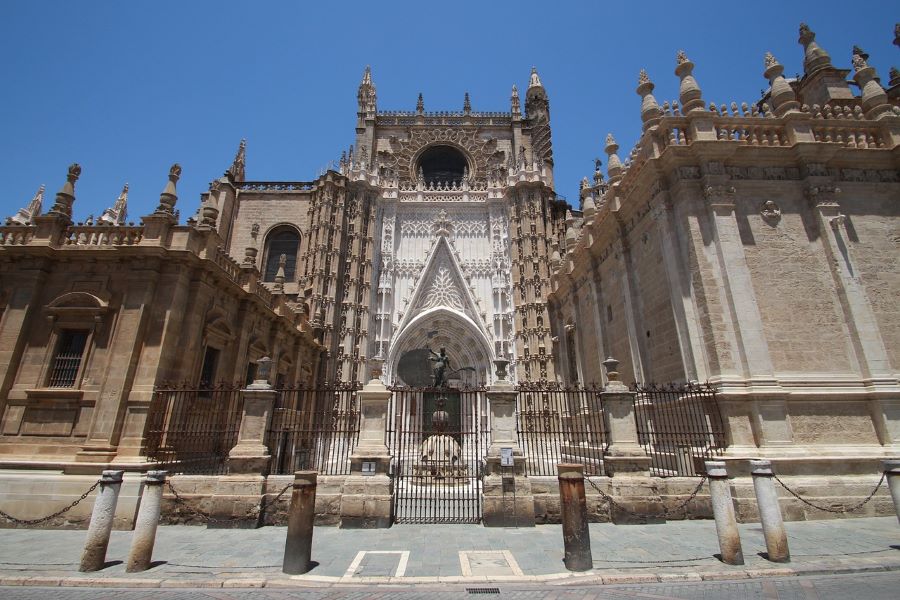
A little history about the Seville Cathedral
The Seville Cathedral, also known as the Cathedral of Saint Mary of the See, is a magnificent Gothic cathedral located in Seville, Spain. It is one of the largest and most impressive cathedrals in the world and holds great historical and religious significance.
The history of the Seville Cathedral dates back to the 15th century. The cathedral stands on the site of a former mosque that was built during the Moorish rule of Spain. After the Christian Reconquista of Seville in 1248, the mosque was consecrated as a cathedral, but it was later decided that a grander cathedral should be constructed to reflect the city’s newfound importance and wealth.
Construction of the new cathedral began in 1402 under the reign of King Ferdinand I of Aragon and Queen Isabella I of Castile, who were also known for sponsoring the voyages of Christopher Columbus. The cathedral was designed in the Gothic architectural style, with influences from the Mudéjar style, which blended Islamic and Christian elements.
One of the most iconic features of the Seville Cathedral is its central nave, which is the longest in any Gothic cathedral. The interior is richly decorated with intricate carvings, ornate altars, and numerous chapels, showcasing the opulence and religious devotion of the time.
Construction of the cathedral took over a century to complete, and it wasn’t until the early 16th century that the building was officially consecrated. Over time, various additions and renovations were made to the cathedral, including the addition of Renaissance and Baroque elements.
In 1987, the Seville Cathedral was designated as a UNESCO World Heritage Site, along with the adjoining Alcázar palace complex and the Archivo General de Indias. These three historic sites collectively showcase the rich history and cultural heritage of Seville and its role in the Age of Exploration.
Today, the Seville Cathedral continues to be a major religious site, attracting countless visitors from around the world who come to admire its architectural beauty, historical significance, and religious artifacts. It stands as a testament to the city’s diverse cultural influences and its pivotal role in Spain’s history.
The Giralda or Bell Tower
One of the cathedral’s standout structures is the Giralda, a bell tower that was originally constructed as a minaret during the mosque’s time. The Giralda stands as a symbol of Seville and is a stunning example of Moorish architecture, featuring a series of ramps that allow for easy ascent to the top.
The Giralda, also known as the Bell Tower of the Seville Cathedral, is an iconic architectural masterpiece located in Seville, Spain. It stands as a testament to the city’s rich history and its blend of Moorish and Christian influences.
Originally constructed as a minaret during the rule of the Moors in the 12th century, the Giralda was part of the Great Mosque of Seville. It served as the call to prayer for the Muslim community. When Seville was reclaimed by Christian forces in 1248, the minaret was repurposed into a bell tower for the newly established cathedral.
The Giralda is a prime example of Moorish architecture with its distinctive blend of Islamic and Christian elements. Rising to a height of about 104 meters (341 feet), it dominates the skyline of Seville and is one of the city’s most recognizable landmarks. The tower’s architecture is characterized by its elegant simplicity, geometric patterns, and use of brick and stone.
A unique feature of the Giralda is its ascending ramps instead of a traditional staircase. These ramps were designed to allow the muezzin (the person who calls the faithful to prayer) to ride a horse to the top for the call to prayer. This ingenious design has made the tower accessible to people of all abilities over the centuries.
At the top of the Giralda, visitors are rewarded with breathtaking panoramic views of Seville and its surroundings. The tower offers a glimpse into the city’s history, showcasing both its medieval charm and its modern vibrancy.
The pinnacle of the Giralda is crowned by a bronze weathervane known as “El Giraldillo,” which serves as a symbol of faith and triumph. This statue represents Faith and was added during the Renaissance period. It also acts as a wind vane, rotating with the breeze and giving the tower its nickname, “Giralda,” which means “turning” in Spanish.
Interior details of the Seville Cathedral
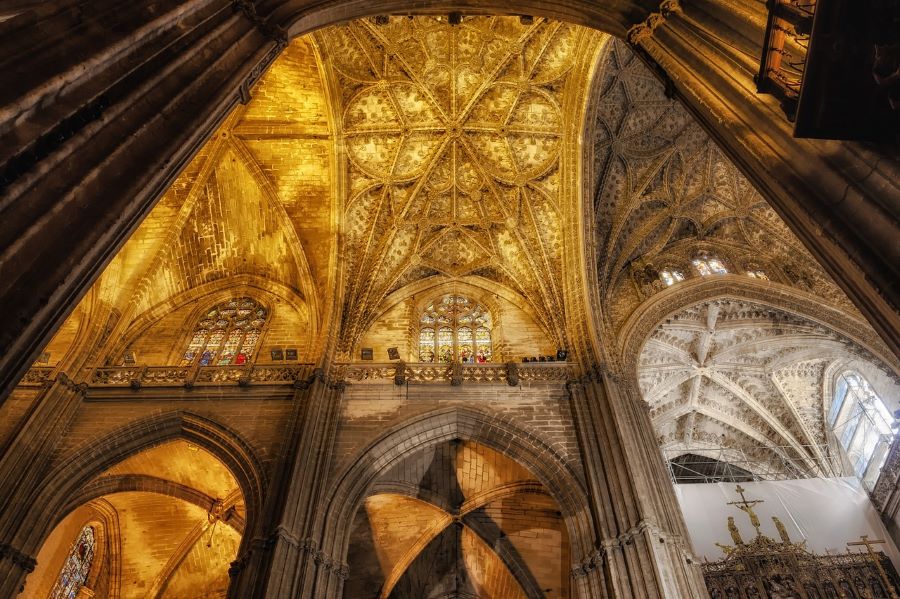
The interior of the Seville Cathedral is a breathtaking display of architectural grandeur, intricate craftsmanship, and artistic devotion. It is adorned with a myriad of details that reflect the cathedral’s historical significance, religious devotion, and the wealth of the city during its construction. Here are some of the notable interior details of the Seville Cathedral:
Nave and Aisles: The central nave of the cathedral is impressively vast and extends to remarkable lengths, making it one of the longest Gothic naves in any cathedral. The nave is flanked by aisles on either side, creating a sense of spaciousness. The tall columns that support the nave’s arches are adorned with intricate carvings and decorative motifs.
Altarpiece of the Main Chapel: The main altar of the cathedral features an ornate altarpiece known as the “Retablo Mayor.” This elaborate and intricate gold-gilded structure is a masterpiece of Renaissance sculpture and painting. It depicts scenes from the life of Christ and the Virgin Mary, surrounded by numerous saints and angels.
Capilla Mayor (Main Chapel): The main chapel is a focal point of the cathedral’s interior. It houses the tomb of Christopher Columbus, a monumental structure carried by allegorical figures representing the four kingdoms of Spain at the time of Columbus’s voyages.
Choir Stalls: The choir stalls are finely carved wooden seats located in the central nave. These stalls are adorned with detailed carvings of religious figures, mythological creatures, and intricate patterns. The choir stalls are a testament to the craftsmanship of the artisans of the time.
Chapels and Side Altars: The Seville Cathedral boasts numerous chapels and side altars dedicated to various saints, religious figures, and noble families. Each chapel features unique artwork, sculptures, and altarpieces that reflect different artistic styles and periods.
Gothic Ribbed Vaulting: The cathedral’s ceiling features intricate ribbed vaulting in the Gothic style. The vaults intersect to create an impressive and visually striking pattern. The intersections are often decorated with carved keystones depicting religious figures and symbols.
Artworks and Paintings: The walls of the cathedral are adorned with an array of paintings, frescoes, and religious artworks. These pieces showcase the artistic achievements of different periods, from medieval to Baroque.
Tomb of Fernando III: The tomb of King Ferdinand III of Castile is another remarkable feature. It is situated in the Capilla de San Hermenegildo and is adorned with a recumbent effigy of the king, surrounded by intricate carvings and religious motifs.
Sculptures and Statues: Throughout the interior, visitors can find sculptures and statues of various saints, angels, and biblical figures. These sculptures demonstrate the skill and craftsmanship of the artists who contributed to the cathedral’s construction and embellishment.
Stained Glass Windows: The cathedral’s stained glass windows are a visual delight, allowing colorful light to filter into the interior. These windows depict scenes from the Bible, the lives of saints, and other religious narratives.
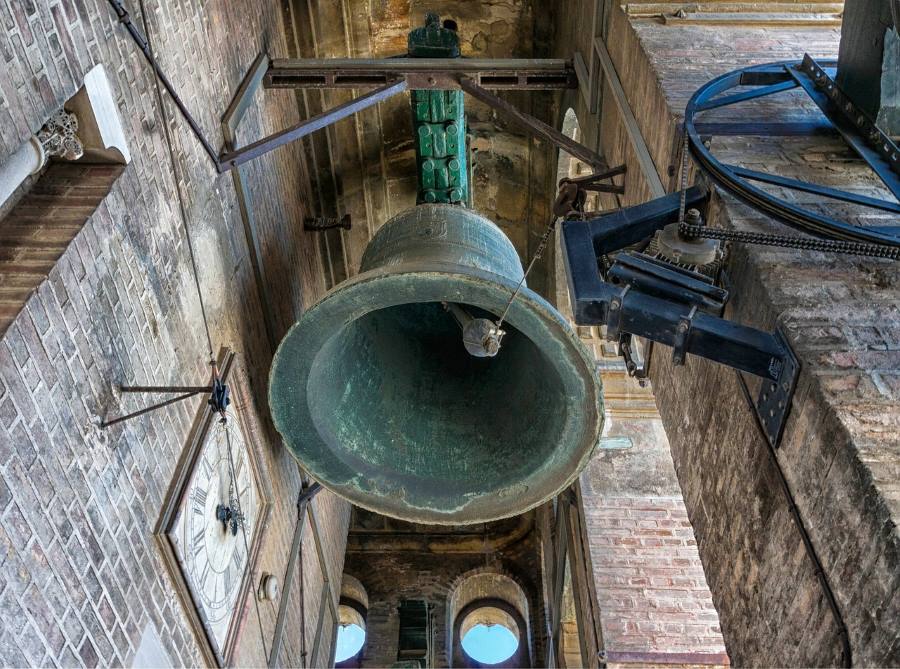
Bells of the cathedral
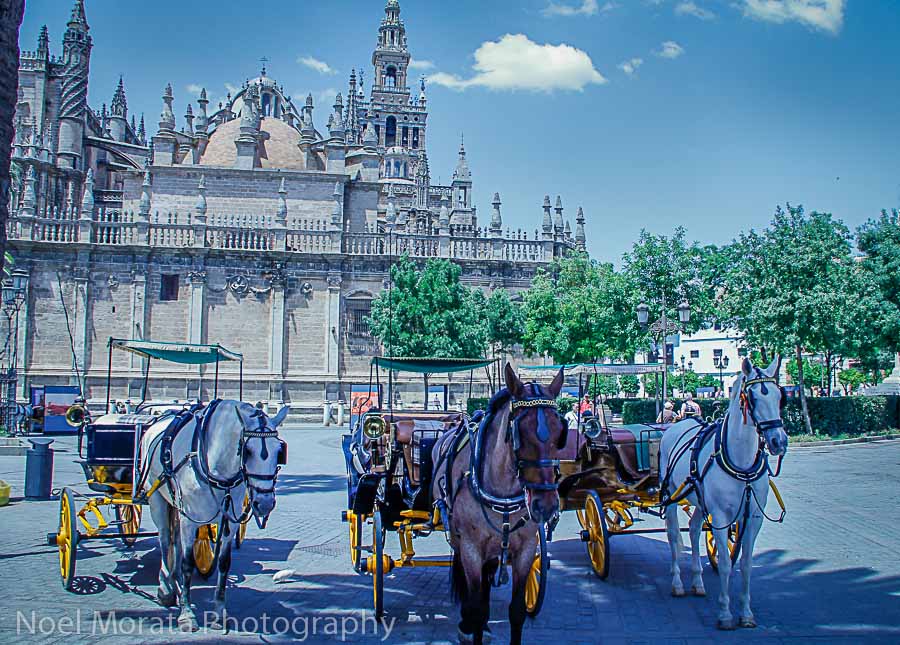
Horse drawn carriages around the cathedral
There’s always a lineup of gorgeous horse drawn carriages around the cathedral grounds. You can negotiate a tour with a guide to several tourist attractions that you can visit around Seville.
The area surrounding the Seville Cathedral is often adorned with the picturesque sight of horse-drawn carriages, a charming and nostalgic feature that adds to the ambiance of this historic locale. These carriages offer visitors a unique and leisurely way to explore the city’s architectural wonders, including the cathedral itself, while experiencing a touch of old-world elegance.
The horse-drawn carriages are often beautifully decorated, with ornate designs that harken back to a bygone era. The carriages come in various sizes and styles, from intimate two-passenger vehicles to larger carriages capable of accommodating small groups. The horses that pull these carriages are well-groomed and add a touch of elegance to the scene, evoking a sense of nostalgia for a time when such carriages were a common mode of transportation.
The route taken by these carriages usually winds through the historic streets of Seville, passing by iconic landmarks such as the Seville Cathedral, the Alcázar palace, and the charming neighborhoods of the city. The slow pace of the carriage ride allows passengers to take in the architectural details of the buildings, the vibrant street life, and the overall atmosphere of the city.
For tourists and visitors, a horse-drawn carriage ride offers a romantic and leisurely way to experience Seville’s beauty and history. The rhythmic clip-clop of the horses’ hooves and the gentle swaying of the carriage create a soothing and memorable experience. It’s a chance to step back in time and appreciate the city’s rich cultural heritage while being treated to personalized insights and commentary from the carriage drivers, who often share interesting stories and historical tidbits.
This is a fun photo op tour you can enjoy solo or with friends while you tour around the gorgeous historic parts of Seville on these carriages.
Enjoy this carriage ride tour of Seville below
Check out the video tour highlights of the cathedral below
l
Detailed Guide to Visiting Seville Cathedral
Location
Av. de la Constitución s/n, 41004 Sevilla
Located in the heart of Seville’s historic center, directly adjacent to the Real Alcázar and near the Archivo de Indias.
Opening Hours
Seville Cathedral is open every day from 11 am to 7 pm, Mon-Sat and 2:30 pm to 6pm on Sun
Detailed Schedule:
- Monday: 11:00 a.m. to 3:30 p.m. (from 4:30 p.m. to 6:00 p.m.)
- Tuesday to Saturday: from 11:00 a.m. to 7:00 p.m.
- Sunday: 2:30 p.m. to 6:00 p.m.
Ticket Prices
General Admission
- Adults (14+): €17 for visitors aged 14 years and above / around €14
- Students (14-25) & Seniors (65+): €7
- Children (under 14): Free (but book free time slots when buying adult tickets online)
What’s Included
- Access to the Cathedral, La Giralda Tower, and Church of El Salvador
- The visit of the Giralda is included in the cathedral’s ticket
Free Access Options
- The visit of the cathedral is free for everyone Sundays from 4:30pm
- The Giralda: Free admission is available on Mondays from 4:00 p.m. and on Sundays until 2:00 p.m.
- Note: Online reservation is required and gets booked up fast
Visit Duration
It will take you about 75 minutes to 2 hours to properly explore the cathedral and enjoy the atmosphere.
Booking Tips
- Try to avoid the prayer hours and visit in the early hours to avoid the rush of the crowd
- Online booking is recommended, especially for free admission times
- Complete tour of the Cathedral with guided tours available (approximately 1 hour and a half, maximum group of 30 people per guide)
The cathedral is the world’s largest Gothic cathedral and houses Christopher Columbus’s tomb, making it one of Seville’s most important attractions.
Visit these other attractions close to the Seville Cathedral
The Seville Cathedral is located in the heart of the city, surrounded by a wealth of historical and cultural attractions that showcase the beauty and heritage of Seville. Here are some notable places of interest close to the Seville Cathedral:
Real Alcázar: Just a short walk from the cathedral, the Real Alcázar is a stunning palace complex known for its intricate Mudéjar, Gothic, Renaissance, and Baroque architecture. It boasts lush gardens, intricate tilework, and opulent interiors. It has served as a royal palace for centuries and is a UNESCO World Heritage Site.
Archivo General de Indias: Adjacent to the cathedral, this historical archive houses an extensive collection of documents related to Spain’s colonial history, including records from the Americas and the Philippines. It offers valuable insights into the Age of Exploration.
Barrio Santa Cruz: This charming old Jewish quarter is characterized by its narrow streets, whitewashed buildings, and hidden squares. It’s a delightful place to wander, filled with small shops, cafes, and historical landmarks.
Plaza de España: Located in María Luisa Park, this impressive plaza features a semicircular building adorned with colorful ceramic tiles representing different provinces of Spain. It’s a popular spot for leisurely strolls and boat rides in the canal.
Gardens of Murillo: These picturesque gardens are named after the renowned painter Bartolomé Esteban Murillo. They offer a serene oasis with fountains, pathways, and greenery, making it a peaceful retreat near the cathedral.
Casa de Pilatos: A short walk from the cathedral, this palace is a blend of Mudéjar, Renaissance, and Gothic architectural styles. It features beautiful courtyards, intricate tilework, and a mix of Spanish and Italian influences.
Plaza del Triunfo: This square is home to the Archivo General de Indias, the Real Alcázar, and the Seville Cathedral. It’s a hub of historical significance and architectural beauty.
Hospital de los Venerables: A former hospice for elderly priests, this Baroque building showcases exquisite architecture and features an interior courtyard with impressive columns and archways.
Casa de la Memoria de Al-Ándalus: For those interested in flamenco, this venue offers intimate flamenco performances that showcase the passionate music and dance style that originated in Andalusia.
Metropol Parasol (Las Setas): A modern contrast to the historical surroundings, this contemporary wooden structure offers panoramic views of Seville from its rooftop. It also houses a market and archaeological museum.
Enjoy this carriage ride tour of Seville below
Here are some more photo highlights to visiting the Cathedral of Seville below
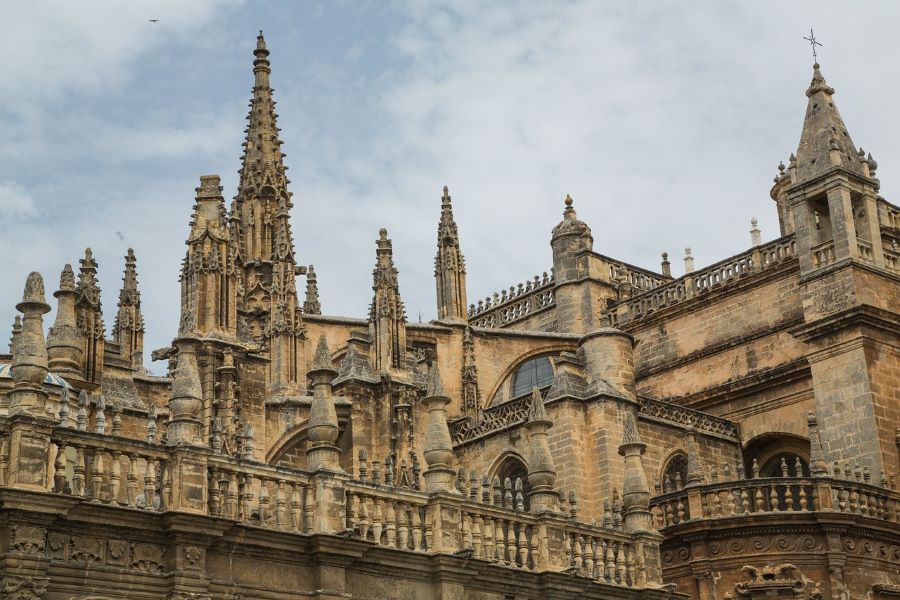
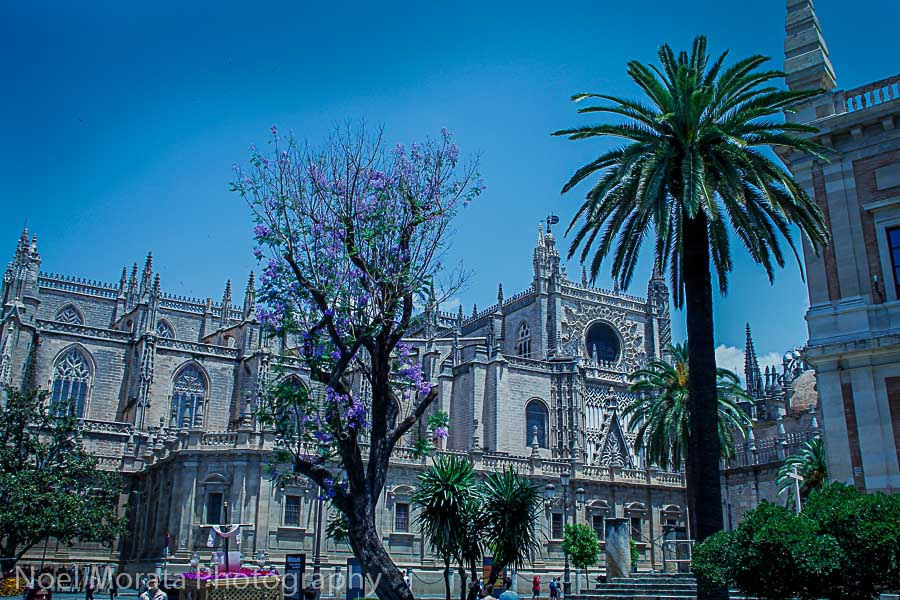
Check out these other posts on visiting Seville
Game of Thrones at Seville Alcazar
3 day itinerary of Seville, Spain
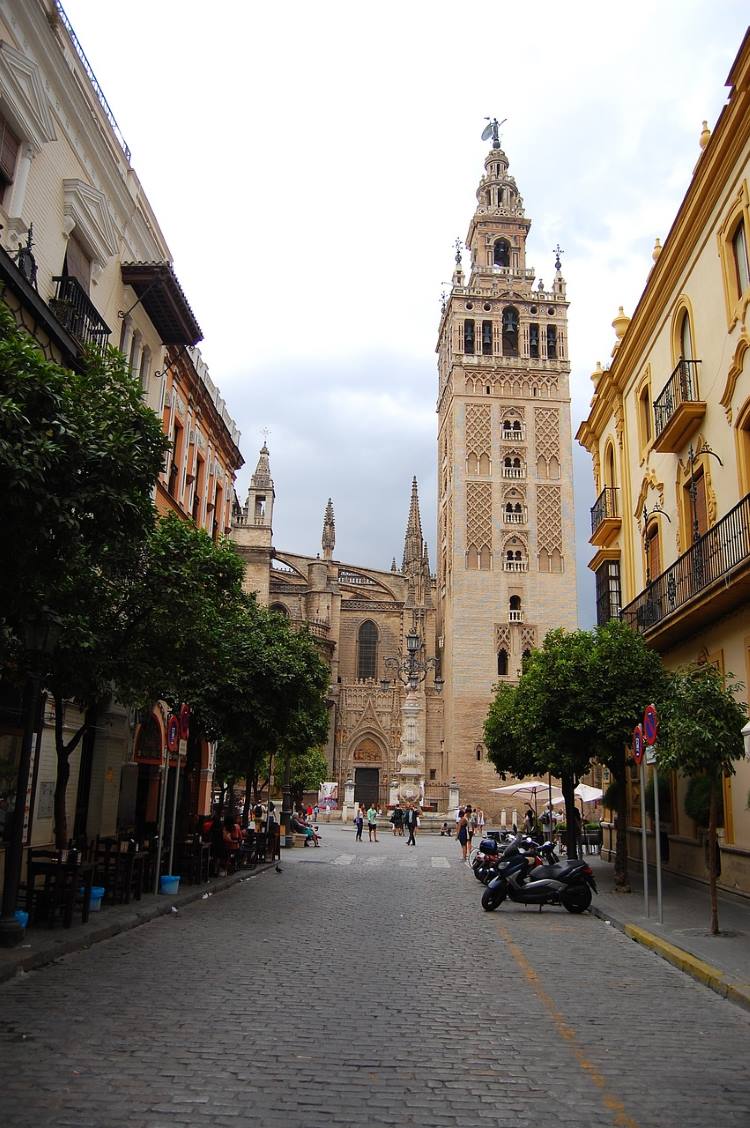
Conclusion on a visit to the Seville Cathedral
Hope you enjoyed the tour of the Cathedral of Seville for Travel Photo Mondays, Please do visit some of the wonderful posts being submitted below for today’s tour.
If you enjoyed this post, please do share this post with any of the social media buttons below, thank you.
The Cathedral of Seville in the historic center of Seville is a World Heritage Landmark site that is also the largest gothic cathedral in the world. After its completion in the early 16th century, the landmark became the largest cathedral in the world passing the Byzantine cathedral Hagia Sofia, which held this distinction for over a thousand years.
Built on the site of an ancient mosque, the remaining minaret was converted into a bell tower called La Giralda which is the most well-known symbol of the city.
The famous Giralda is over 343 feet in height and was built to resemble the famous Katoubia mosque in Marrakesh, Morocco. Even though most of the Cathedral of Seville is built in gothic style, the top portion of the Giralda was fashioned in Renaissance style with gilt bronze balls.
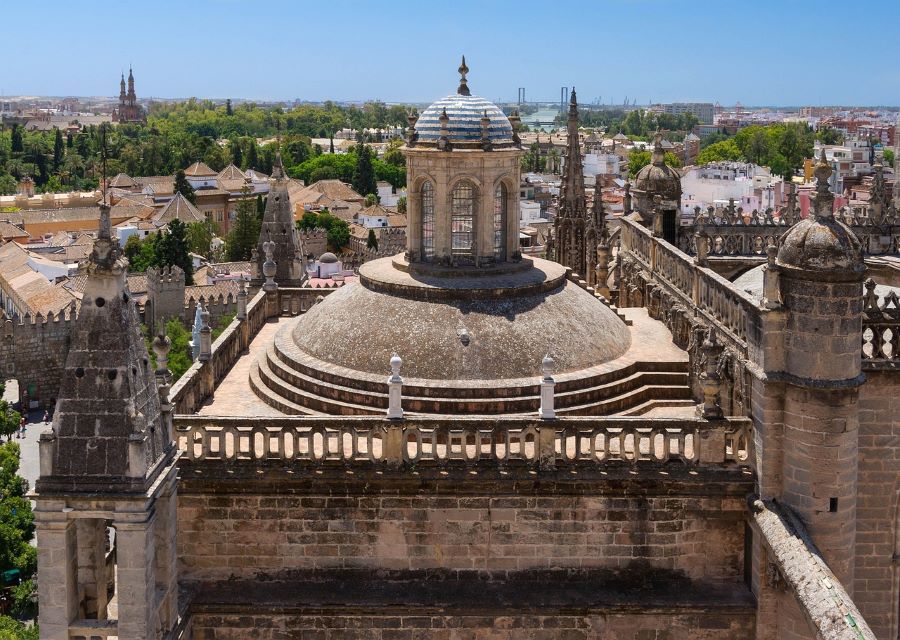
Conclusion to a visit to the Cathedral of Seville
Thanks for checking out this post on Cathedral of Seville, Spain with Visiting Spain and Mediterranean.com, hope that this was helpful for planning a visit with things to do, attractions and other fun places to explore. Please come back again for more adventures in Spain and the Mediterranean coast.
If you enjoyed this post, please do share this post with any of the social media buttons below, thank you.
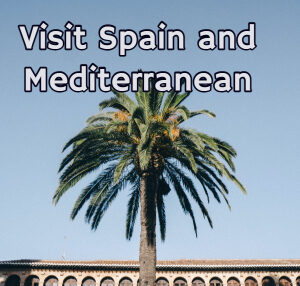
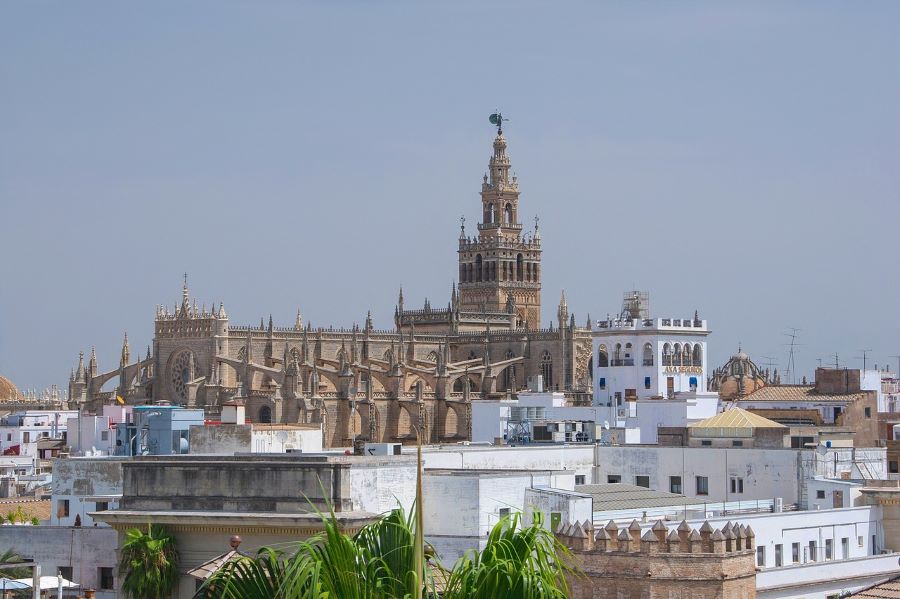
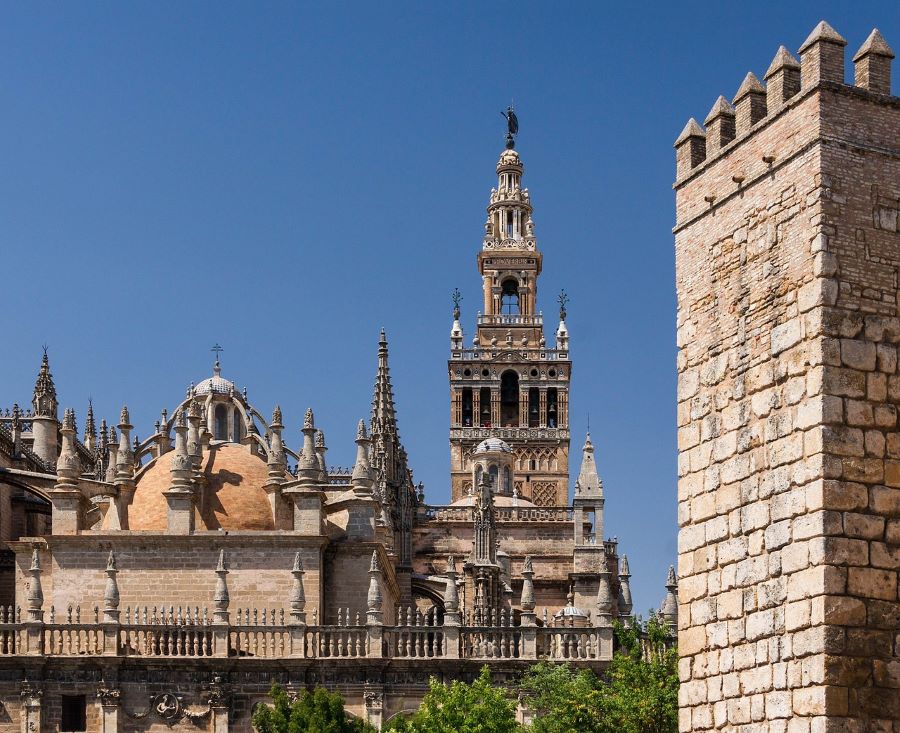
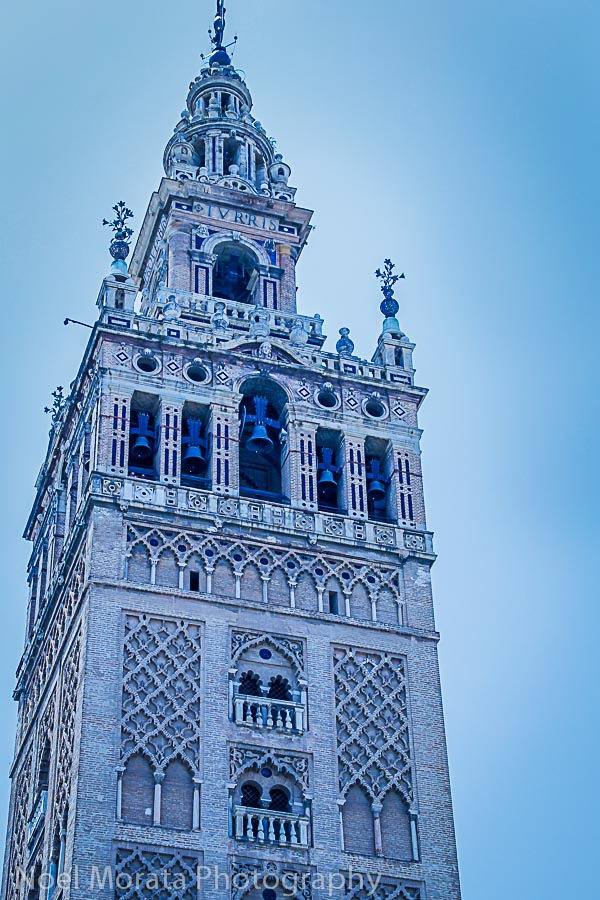
4 thoughts on “Seville Cathedral”